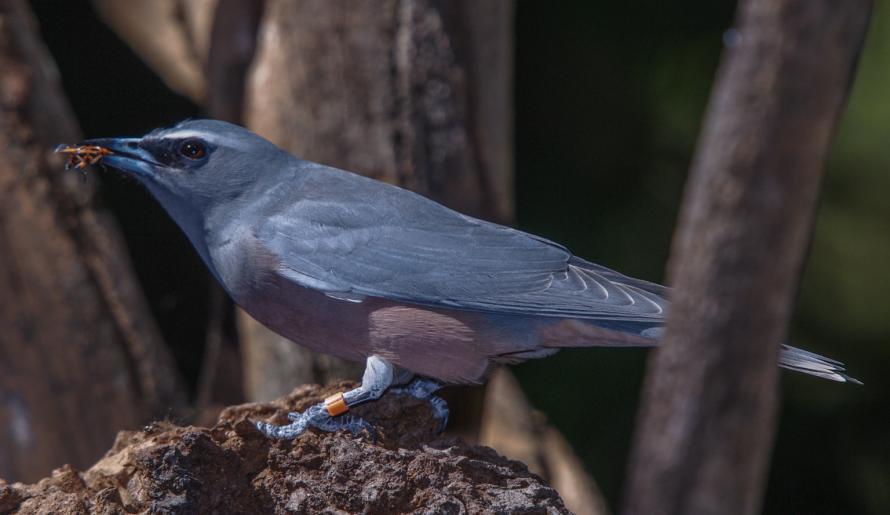

White-browed Woodswallow
Artamus superciliosus
| Details | |
|---|---|
| Type | Bird |
| Group | |
| Biology | Breeding season: August to December. Clutch size is two to three. Builds a loose shallow nest from twigs, grasses and roots which is placed in a tree fork, hollow stump or fence post, about 1 m to 6 m above the ground. Both sexes build the nest, incubate the eggs and feed the young. |
| Distinctive Markings | White eyebrow. This species is the most 'colourful' of all the woodswallows. |
| Taxonomy | |
|---|---|
| Phylum | Chordata |
| Class | Aves |
| Order | Passeriformes |
| Family | Artamidae |
| Genus | Artamus |
| Species | superciliosus |
Woodswalllows roost together in tight clusters at night, as well as during cold weather and storms. Like other woodswallows, this species has a divided, brush-tipped tongue that can be used to feed on nectar from flowers. They are nomadic, and somewhat migratory as they move north in autumn and south in spring.
| Interesting Facts | |
|---|---|
| Diet | Omnivire. Feeds on insects and nectar. |
| Habitat | Found in a wide range of inland habitats, from eucalypt forests and woodlands to dry heaths and spinifex. |
| Native Status | Native to Australia |